Topics
Category
Era
Seed Corn
From the time of statehood into the early 1900s, Minnesota's climate discouraged the growing of corn. Many immigrants from Northern Europe disbelieved the skeptics and set out to prove them wrong by developing special varieties of seed capable of growing corn in cold conditions. They were successful, and by the late 1930s, Minnesota had become one of the leading corn-producing states.
The ancestry of maize, the grain we know today as corn, dates back more than eight thousand years to a plant called teosinte. This plant grew in the hot, sunny climates of what became southern Mexico. It was such a critical food source for the Maya that they built temples in its honor and worshiped their god Yam Kaax, the patron of maize growers. The Inca and Aztec civilizations worshiped a sun god upon whom they depended for this vital food source.
Over thousands of years, maize migrated northward with advancing civilizations. After American Indians introduced it to European colonists in the 1600s, its nutritional value made it the preferred feed for livestock and a popular grain for use in many food products. Undoubtedly, early Euro-American farmers saw corn as the grain of the future—a crop grown in the warmer areas of the continent, but not in colder Minnesota.
Individual farmers and emerging seed companies took on the challenge of developing special corn seeds capable of growing in Minnesota. Beginning in the late 1800s, the central Minnesota community of Dassel accepted this challenge. During this period, immigrants, primarily from Scandinavia, came to the Dassel area. They were accustomed to cold weather and committed to farming.
The immigrants planted corn seed in their fields. When the corn stalks matured to the extent they could in the climate, the farmers identified the strongest stalks that displayed the best root systems and the most mature ears of corn. The ears from these selected stalks would provide the seed for research the following year.
However, using these kernels as seed depended upon reducing their moisture levels. If the seeds were not dried, their kernels would freeze during winter and lose their ability to germinate, or they would rot in the ground when planted. Without the convenience of electric power, the farmers found creative ways for drying the kernels. Some dried them by hanging the ears over wood-burning stoves in farm kitchens or in warm upstairs bedrooms.
Once the kernels had dried, farmers removed them from the ears using hand-cranked shelling and grading machines. To determine how well these kernels would germinate, they placed a specific number in rags or sawdust and kept them damp. The percent that sprouted determined the germination rate.
Farmers repeated the process of using specially selected kernels the following year. After several years, they developed new varieties of seed suited for Minnesota’s climate. Perhaps unknowingly, they had put into practice a variation of Charles Darwin’s theory of natural selection: the species that survives is the species that adapts.
Research conducted at the University of Minnesota aided these efforts. In 1893, using a similar process of selective reproduction, the university began work on early-maturing seed. One of the hardy varieties developed at the university was known as Minnesota 13. In 1905, the university made available limited quantities of its research seeds, including Minnesota 13, to emerging seed-corn businesses. As a result, several new varieties of Minnesota 13 seed became popular.
Efforts of the Dassel-area seed-corn operations, working in concert with the University of Minnesota, proved successful in developing new seed varieties suitable for the northern states. By 1910, farmers throughout the upper Midwest grew corn from the varieties of seed produced in the Dassel area. More than twenty individual seed-corn companies operated in this area during the first half of the 1900s. Dassel became recognized as the "Seed Corn Center of the Great Northwest." The traditional Corn Belt expanded to include portions of “cold” Minnesota.
Bibliography
“Big Corn Show Will Bring a Big Crowd Here.” Dassel Dispatch, January 26, 1921.
Casey, Patrick J. The First 100 Years: A History of Meeker County. Casey, MN: N.p., 1968.
Eberhart, A. O. “Seed Corn Week.” Dassel Anchor, September 10, 1914.
“How The Dassel Seed Co. Built a Flourishing Business.” Commercial West (Minneapolis), March 30, 1935.
Johnson, Magnus. “Meeker County Changes I Have Noted.” Meeker County Farmer (Dassel), May 1921.
Johnson, N. J., and K. Johnson. Christinelund Farm. March 1, 1915. Dassel Area Historical Society.
Lamson, Frank B., ed. and comp. History of Meeker County. Reprinted by the Dassel Area Historical Society, Peru, Indiana, 1937.
“Planting Seed Corn in 1912.” Dassel Anchor, March 28, 1912.
“Prize Winning Corn Growers of the State of Minnesota.” Dassel Anchor, January 4, 1912.
Schrimper, Richard J. Minnesota Agriculture—Crops, 1858–1958. St. Paul: Minnesota Department of Agriculture, 1958.
“Seed Corn—An Industry Of Dassel In Itself.” Dassel Dispatch, May 26, 1927.
“Seed Corn Jubilee—Local Corn Grower Wins Sweepstakes At State Fair.” Dassel Dispatch, September 18, 1941.
“Seed Corn Passes Test.” Dassel Dispatch, February 6, 1919.
“To Sell Their Corn.” Dassel Anchor, January 9, 1913.
“Something of a Corn Crop.” Dassel Anchor, November 9, 1911.
“Specializing in Seed Corn—Local Farmers are Aggressive and Successful in Raising and Selling of Quality Seed Corn.” Dassel Anchor, March 11, 1915.
“Will Observe Seed Corn Week.” Dassel Anchor, August 27, 1914.
“Won At International.” Dassel Dispatch, December 10, 1936.
Related Resources
Primary
Lindquist, Oscar E. Those Were the Days. Oscar E. Lindquist, ed. and comp. Dassel, MN: Dassel Dispatch, 1943.
Swanson, Harold. “Corn….Tailored to the North Country.” Farmer, April 5, 1958.
Wallace, Henry, and William Brown. Corn and Its Early Fathers. East Lansing, MI: Michigan State University Press, 1956.
Secondary
Hayes, Herbert K. The Development of Plant Breeding at Minnesota. University of Minnesota, Department of Agronomy and Plant Genetics. St. Paul: Allegra Print and Imaging, 2009.
Peters, S. “The History and Evolution of Corn.” Seeds of Change, September 2004.
Troyer, Forrest A., and Lois G. Hendrickson. “Background and Importance of ‘Minnesota 13’ Corn.” Crop Science 47 (May–June 2007): 905–914.
Walbot, Virginia. “Researchers Study the Mysterious Sex Life of Corn.” St. Paul Pioneer Press, September 15, 2011.
Web
Bassie-Sweet, Karen. "Corn Deities and the Complementary Male/Female Principle.” http://www.mesoweb.com/features/bassie/corn/media/corn_deities.pdf
Related Images
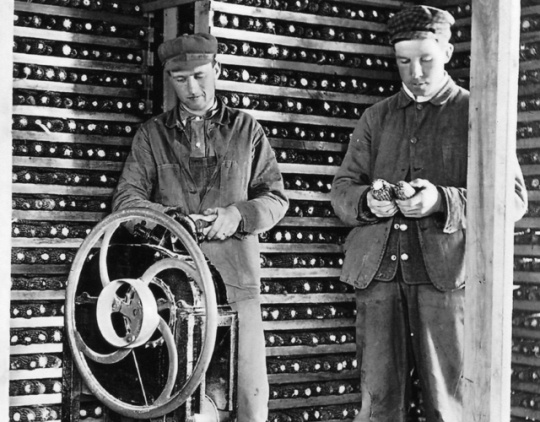
Shelling Ears of Corn
Martin Carlsted turning the handle of a manual corn sheller to remove kernels, c.1910.
Public domain
Holding Location
Articles

Planting Seed Corn
Individual using a horse drawn planter to plant seed corn, c.1905.
Public domain
Holding Location
Articles
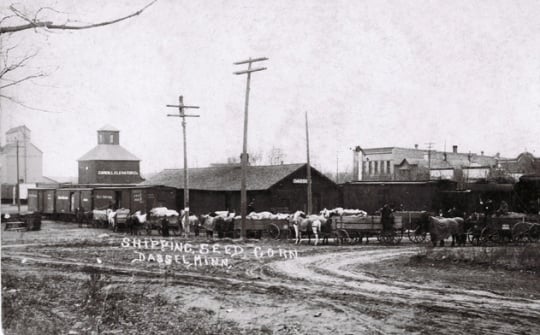
Transporting seed corn by wagon and rail car
Horse-drawn wagons hauling bags of seed corn to a railroad station for further transporting, c.1907.
Public domain
Holding Location
Articles
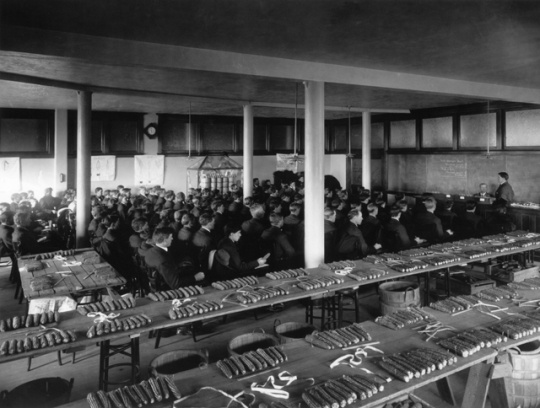
Class on Judging Corn
Large lecture room at University of Minnesota with ears of corn laid out for judging by students. Photographed by Harry D. Ayer c.1910.
Public domain
Holding Location
Articles
More Information
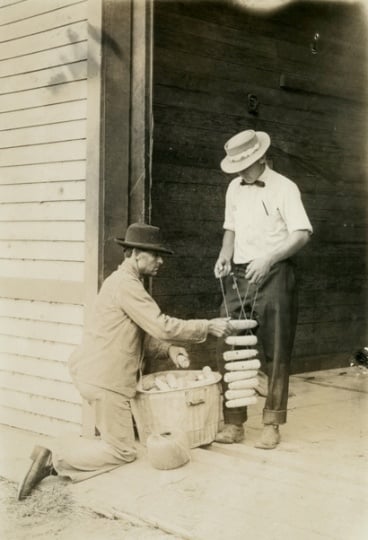
Mounting Ears of Corn for Drying
Two individuals tying up ears of corn on a rack for drying, c.1910.
Public domain
Holding Location
Articles
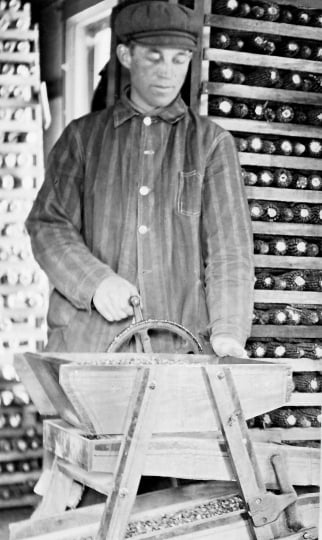
Grading Kernels of Seed
Martin Carlsted turning the handle of a manual corn grader to grade and separate different sizes and shapes of kernels, c.1910.
Public domain
Holding Location
Articles
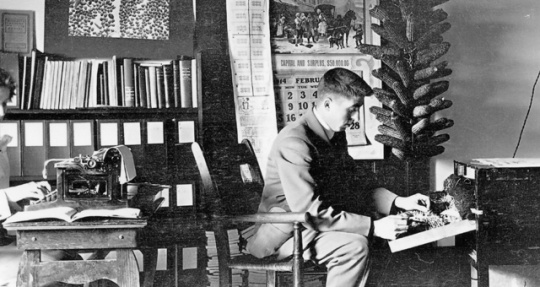
Germination Testing
Alfred Carlsted counting sprouted kernels to determine the percent that germinated, 1914.
Public domain
Holding Location
Articles
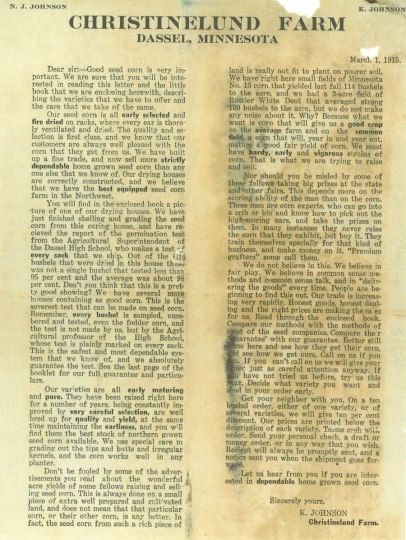
Christelund Farm marketing letter
Christelund Farm marketing letter, 1915.
Public domain
Holding Location
Articles
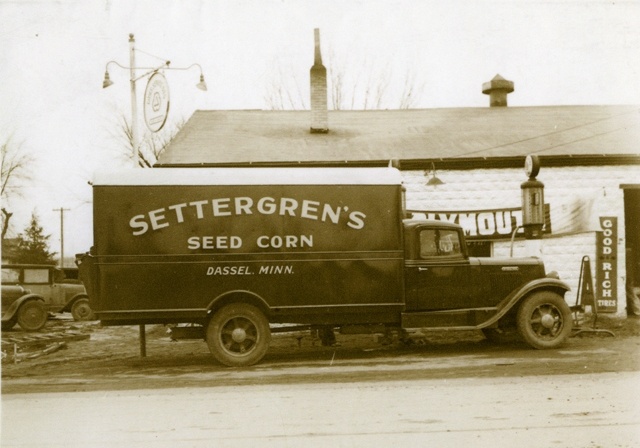
Settergren Seed Corn delivery truck
Settergren Seed Corn delivery truck, c.1930s.
Holding Location
Articles

Selecting Best Ears for Seed
Individuals evaluating stalks and ears of the corn in a field to select the best seed for the following year, c.1940s.
Holding Location
Articles
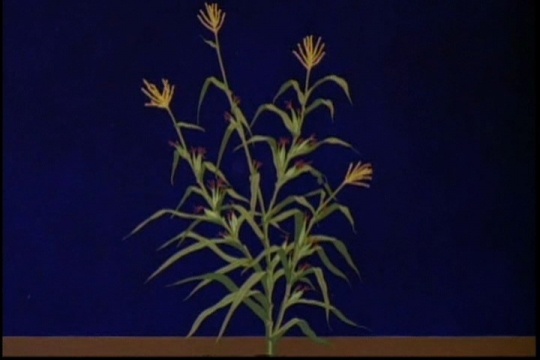
Teosinte Plant
Drawing of how the teosinte plant may have looked thousands of years ago. Used in the Disney short film The Grain That Built a Hemisphere, 1943.
Public domain
Holding Location
Articles

Mayan Temple
Drawing of a temple built in honor of maize. Used in the Disney film The Grain That Built a Hemisphere, 1943.
Public domain
Holding Location
Articles
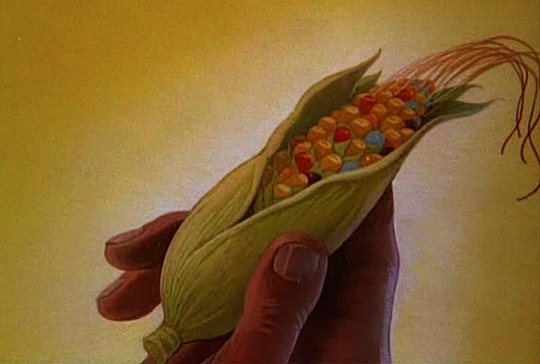
American Indian Corn
Hand of an American Indian symbolically offering ear of corn to colonists. Used in The Grain That Built a Hemisphere, 1943.
Public domain
Holding Location
Articles
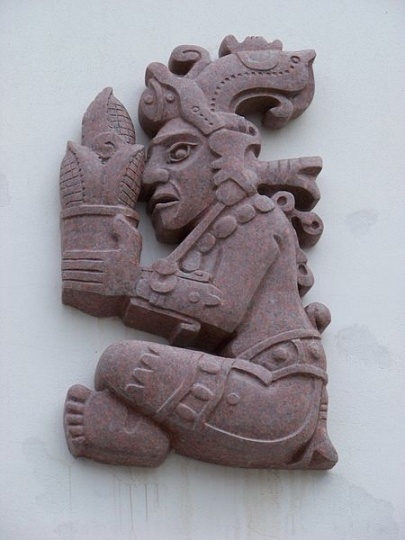
Yam Kaax, the Mayan corn god
Corn god holding an ear of corn. Photograph by Wikimedia Commons user ŠJů, 2012.
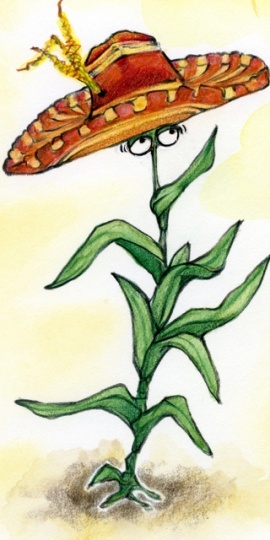
Maize Evolved in Warm Southern Mexico
Drawing of a maize or corn plant enjoying warm weather in Southern Mexico. Drawing by Emmeline Hall.
All rights reserved
Holding Location
Articles
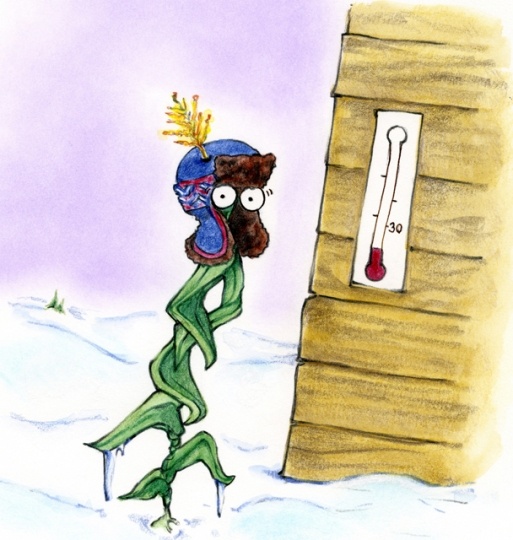
Minnesota Too Cold for Corn
A stalk of corn shivering in Minnesota’s cold climate.
All rights reserved
Holding Location
Articles
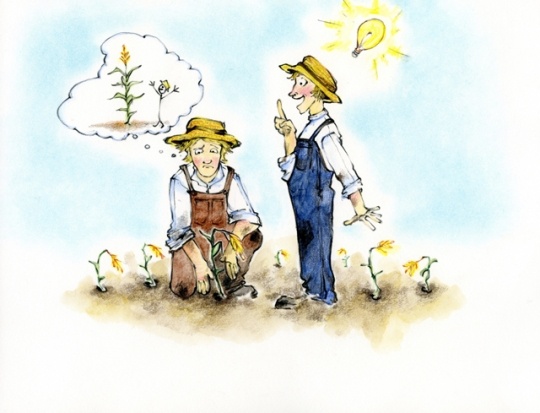
An Agricultural Challenge to Farmers
Two individuals contemplating how to grow corn in Minnesota’s cold climate.
All rights reserved
Holding Location
Articles
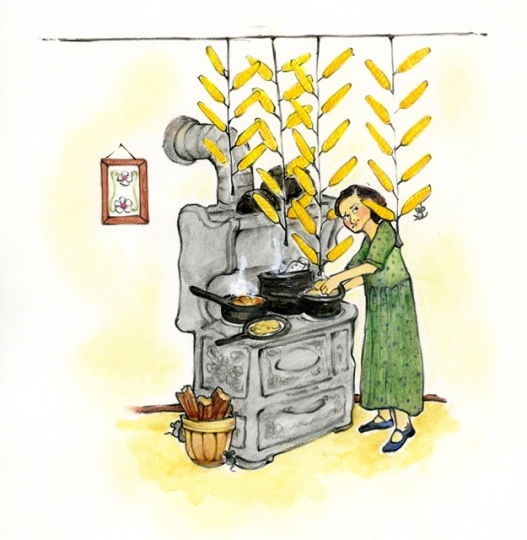
Drying Seed Above the Kitchen Stove
Racks of corn suspended over a warm kitchen stove.
All rights reserved
Holding Location
Articles
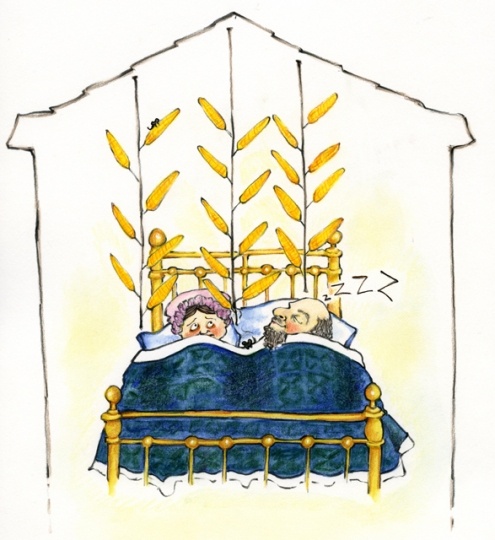
Drying Seed in a Warm Bedroom
A farmer and his wife in bed with ears of corn suspended above them for drying in a warm bedroom.
All rights reserved
Holding Location
Articles
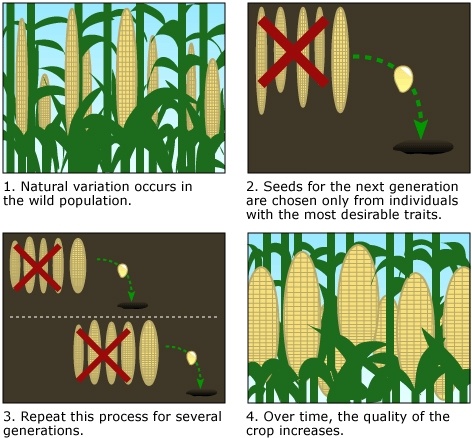
Selective Reproduction
Drawing of the four steps involved in the selective reproduction of better seed.
All rights reserved
Holding Location
Articles
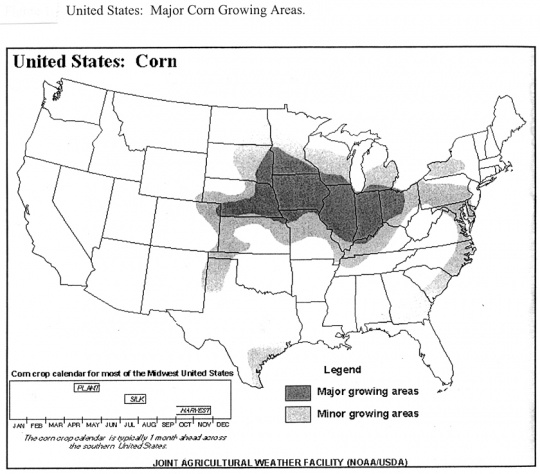
Major Corn-Growing Areas
Map of the United States showing major and minor corn growing areas.
Public domain
Holding Location
Articles
Turning Point
In 1905, the University of Minnesota makes available limited quantities of its Minnesota 13 research-seed stock to several Minnesota seed businesses. This innovation ultimately advances the commercial production of early-maturing seed for Minnesota corn farmers.
Chronology
c.6,000 BCE
c.5,000 BCE
1200 CE
1621
1700s
1800s
1880
c.1880s
1890s
1905
1910
1910s
c.1930
Late 1930s
Bibliography
“Big Corn Show Will Bring a Big Crowd Here.” Dassel Dispatch, January 26, 1921.
Casey, Patrick J. The First 100 Years: A History of Meeker County. Casey, MN: N.p., 1968.
Eberhart, A. O. “Seed Corn Week.” Dassel Anchor, September 10, 1914.
“How The Dassel Seed Co. Built a Flourishing Business.” Commercial West (Minneapolis), March 30, 1935.
Johnson, Magnus. “Meeker County Changes I Have Noted.” Meeker County Farmer (Dassel), May 1921.
Johnson, N. J., and K. Johnson. Christinelund Farm. March 1, 1915. Dassel Area Historical Society.
Lamson, Frank B., ed. and comp. History of Meeker County. Reprinted by the Dassel Area Historical Society, Peru, Indiana, 1937.
“Planting Seed Corn in 1912.” Dassel Anchor, March 28, 1912.
“Prize Winning Corn Growers of the State of Minnesota.” Dassel Anchor, January 4, 1912.
Schrimper, Richard J. Minnesota Agriculture—Crops, 1858–1958. St. Paul: Minnesota Department of Agriculture, 1958.
“Seed Corn—An Industry Of Dassel In Itself.” Dassel Dispatch, May 26, 1927.
“Seed Corn Jubilee—Local Corn Grower Wins Sweepstakes At State Fair.” Dassel Dispatch, September 18, 1941.
“Seed Corn Passes Test.” Dassel Dispatch, February 6, 1919.
“To Sell Their Corn.” Dassel Anchor, January 9, 1913.
“Something of a Corn Crop.” Dassel Anchor, November 9, 1911.
“Specializing in Seed Corn—Local Farmers are Aggressive and Successful in Raising and Selling of Quality Seed Corn.” Dassel Anchor, March 11, 1915.
“Will Observe Seed Corn Week.” Dassel Anchor, August 27, 1914.
“Won At International.” Dassel Dispatch, December 10, 1936.
Related Resources
Primary
Lindquist, Oscar E. Those Were the Days. Oscar E. Lindquist, ed. and comp. Dassel, MN: Dassel Dispatch, 1943.
Swanson, Harold. “Corn….Tailored to the North Country.” Farmer, April 5, 1958.
Wallace, Henry, and William Brown. Corn and Its Early Fathers. East Lansing, MI: Michigan State University Press, 1956.
Secondary
Hayes, Herbert K. The Development of Plant Breeding at Minnesota. University of Minnesota, Department of Agronomy and Plant Genetics. St. Paul: Allegra Print and Imaging, 2009.
Peters, S. “The History and Evolution of Corn.” Seeds of Change, September 2004.
Troyer, Forrest A., and Lois G. Hendrickson. “Background and Importance of ‘Minnesota 13’ Corn.” Crop Science 47 (May–June 2007): 905–914.
Walbot, Virginia. “Researchers Study the Mysterious Sex Life of Corn.” St. Paul Pioneer Press, September 15, 2011.
Web
Bassie-Sweet, Karen. "Corn Deities and the Complementary Male/Female Principle.” http://www.mesoweb.com/features/bassie/corn/media/corn_deities.pdf






















